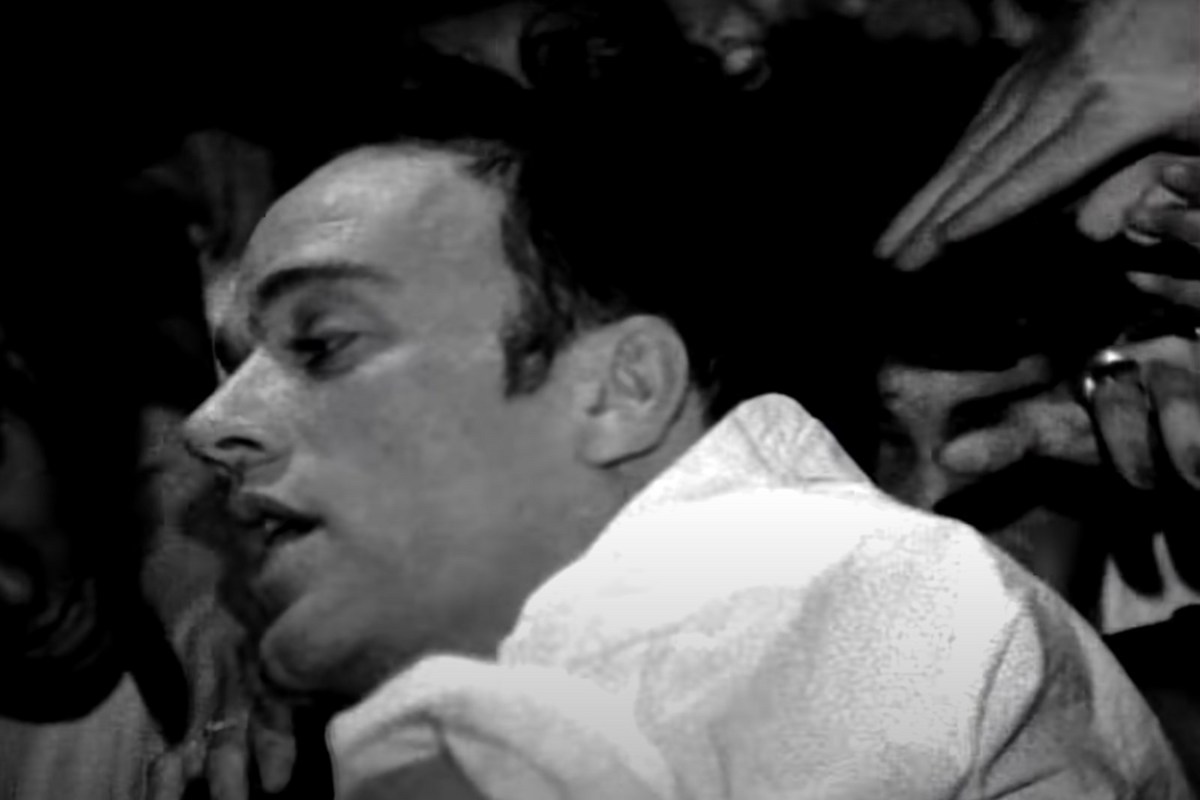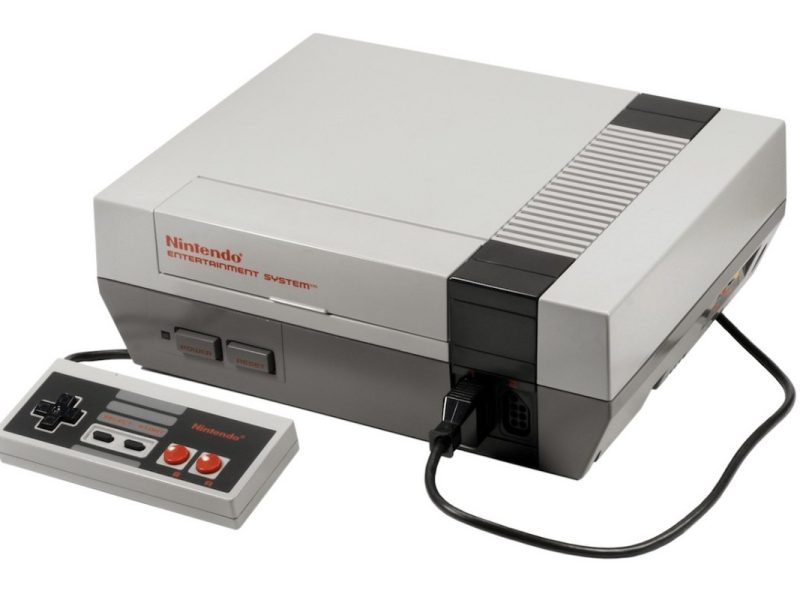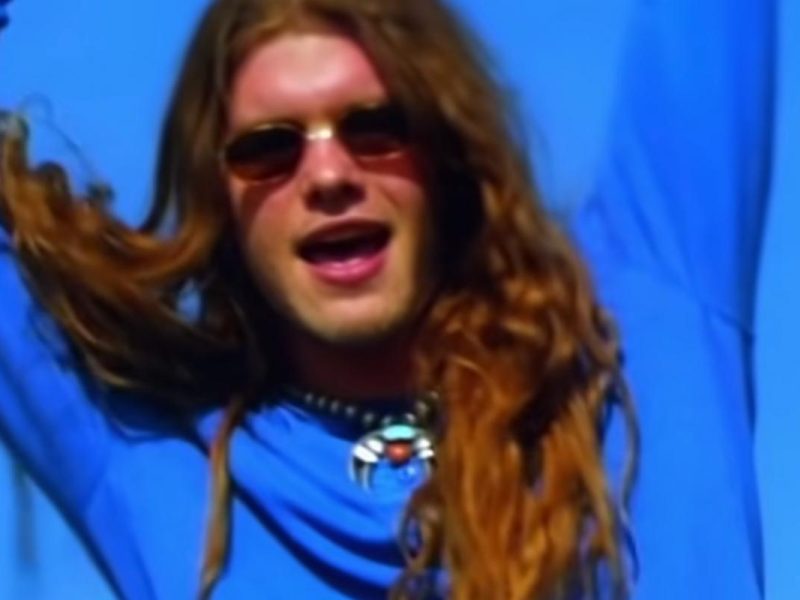Before R.E.M. was finished making Out of Time, they had begun crafting Automatic for the People. They just didn’t know it yet.
In December 1990, they traveled to Prince’s famous Paisley Park Studios outside of Minneapolis to put the finishing touches and create the final mixes for Out of Time, which would come out a few months later. The band recorded a demo version of “Drive” on the final day of mixing for its soon-to-be blockbuster release.
“It wasn’t actually in the running for that album,” guitarist Peter Buck told Melody Maker in 1992. “When we’re mixing or doing overdubs, we all sit around with guitars and just play. I put this thing down on tape and then [bassist/keyboardist] Mike [Mills] added some stuff. We thought it might be a good B-side for that album.”
But “Drive” turned into much more than a B-side. Along with two other tracks that can trace their origins to Paisley Park (“Nightswimming” and “Try Not to Breathe”), the sparse acoustic guitar-propelled song eventually would set the tone for the Automatic for the People sessions. Although Buck, Mills and drummer Bill Berry initially tried to fashion a follow-up out of up-tempo rockers – sort of counter-programming after the delicate, pastoral Out of Time – the faster, harder songs had less appeal, both to the instrumental trio of R.E.M. and the band’s frontman Michael Stipe.
The way the group usually recorded was that Buck, Mills and Berry would first create a slate of instrumental demos, and then Stipe would write lyrics to the ones that most intrigued him. Buck credits the R.E.M. singer for plucking the minor-key “Drive” off the scrap heap.
“I had it on a cassette of demos and I always fast-forwarded through it,” Buck recalled. “I thought it was the most boring thing I’d ever heard. Then, all of a sudden, Michael had these lyrics, which defined the song for me.”
It’s ironic that, on the song that would become Automatic’s first track (and lead single), Stipe helps introduce this ballad-heavy record with the line, “Hey, kids, rock and roll.” The rest of the band loved the idea of having rock and roll in the lyrics, but not necessarily in the music, although Stipe maintained he wasn’t being snarky, but paying tribute to David Essex’s “Rock On” (a similarly sparse recording featuring the same phrase).
“There were, before punk, a few songs that resonated with me,” Stipe told Rolling Stone in 2009. “One was David Essex’s ‘Rock On.’ ‘Drive’ is a homage to that.”
Watch R.E.M.’s ‘Drive’ Music Video
But “Drive” was more about telling kids to rock – even “around the clock” in a nod to the dawn of the genre. The lyrics appear to be about control, with “elder statesman” Stipe (he was barely over 30 at the time), reminding a younger generation to think for themselves. Certain lines also suggest a political angle. “Bush-whacked” gives you an idea of what Stipe thought then-President George H.W. Bush was doing to the country. “Ollie, Ollie in come free” might reference disgraced military man Oliver North, while also recalling a childhood game. Lost youth would be a running theme throughout Automatic.
“It’s a subtle, political thing. Michael specifically mentions the term ‘Bush-whacked,’” Buck said. “But if you want to take it like ‘Stand,’ that’s cool too. You like to think that you can appreciate these songs on any level you want to. I have a lot of records I listen to when I’m just doing the dishes.”
With the lyrics mostly in place, in early 1992, R.E.M. recorded a more complete demo version of “Drive” at John Keane Studios, a favorite establishment for the band to work in its hometown of Athens, Ga. Before the bulk of the Automatic sessions were to take place in March and April, the group spent a little more than a week in the Big Easy, playing and recording in Daniel Lanois’ Kingsway Studio.
“We did demos in New Orleans at Daniel Lanois’ studio, which is an old, haunted mansion – supposedly haunted – and filled with kind of neat, old antiques, neat instruments,” Buck said in a promotional video. “And [we] did demos there, some of which ended up on the record. ‘Drive’ is a live take from there. Bass, drums, guitar and vocals – all live.”
The demo recording was so alluring – with spindly acoustic guitar, deep bass, thunder-crack drums and Stipe’s rich vocals, set against a mass of empty space – that it became the foundation for the final track. Again, “Drive” was setting the tone for Automatic and the work that was yet to take place in Woodstock, N.Y.; Miami, Atlanta and Seattle in the spring of ’92.
R.E.M. would add to “Drive” during some of those sessions. An overdubbed melodica appears at the 45-second mark, bringing some sweet to round out the stark, but also serving as the sort of piercing ring you’d hear in the aftermath of an explosion. But in this case, the explosion happens secondary to the aftermath, when Buck’s overdubbed fuzz guitar (plucked with a nickel for blunt force) crashes in like a fire bomb, setting the emptiness alight.
The emotion is not just carried in Stipe’s cavernous voice, but also in the symphonic strings that pair with the melodica about a minute and a half into the song. According to Berry, the band was in Miami when they decided that strings might benefit some of the Automatic material, including “Drive.” As fans of John Paul Jones’ orchestrations as a member of Led Zeppelin, they contacted the multi-instrumentalist, who agreed to arrange and oversee the additions.
“Doing the string arrangements for that album was a great experience, actually,” Jones told Uncut in 2010. “They sent me the demos of their songs, and we went into a studio in Atlanta, with members of the Atlanta Symphony Orchestra. They were great songs, something you can really get your teeth into as an arranger.”
The strings lift “Drive,” but also swirl around its primary instruments, sometimes tangling with Buck’s fuzzed-up slashes. What began as a relatively subdued, haunting acoustic number turned into something much more vigorous: a track that built and built and built over the course of four-plus minutes, only to set down gently once more. Scott Litt (who had co-produced R.E.M.’s previous three LPs and would work on this one and the next two) thought that the sort of dynamism on display on “Drive” was a result of the band’s love of Queen.
Watch R.E.M. Live at the 1993 MTV Video Music Awards
“The arrangement of ‘Drive’ was, in part, inspired by Queen,” Litt told Mojo in 1995. “Pete and Mike are big Queen fans. Queen records, for all their bombast, sounded like each player had a personality.”
In the final stages of work, “Drive” was chosen to be the track that would lead off the album. It would also be the first single to be released from the album, on Oct. 1, 1992, just a few days before Automatic for the People hit stores. Once more, “Drive” was setting the tone.
As a song without a chorus, “Drive” was a curious choice for the lead single. Perhaps R.E.M. thought that that after “Losing My Religion” – a tune with a mandolin riff – had become a pop smash, anything was possible. “Drive” didn’t quite reach those heights, although this dark gem went to No. 28 on the Billboard Hot 100 (and did even better in Canada and Europe), became plastered on rock radio and served as the gateway for fans to Automatic.
The song’s video, featured prominently on MTV, also served as a signpost. Directed by frequent collaborator Peter Care (from Stipe’s concept), the black-and-white clip appeared to take its cues from Anton Corbijn’s crisp band photos found in the Automatic CD booklet, but added an element of danger. Strobe lights flash, a crowd of outstretched arms swells like a stormy sea and R.E.M.’s frontman appears to be taking part in one unpleasant crowd-surf or the victim of an angry mob. Cutaways are made to Buck, Mills and Berry, each blasted with a fire hose, in a strange appropriation of civil rights era images.
Automatic’s music videos became more important for the band’s image following R.E.M.’s decision not to promote the album with a tour (which had also happened the year earlier with Out of Time). However, the band did knock out one show in Athens for a Greenpeace benefit. At the concert, R.E.M. played a handful of tunes from the new record, including “Drive,” which featured a dramatically different approach. Instead of beginning with the haunting acoustic intro like on the record, the performance took the song’s name literally, launching with a pile driver of electric guitar and organ. The live version of “Drive” metastasized into herky-jerky funk-rock workout.
Although the live reimagining was recorded and released on 1994’s Alternative NRG (also to benefit Greenpeace) and became a B-side, most fans were introduced to the high-energy “Drive” during R.E.M.’s performance at the 1993 MTV Video Music Awards. It continued to be the way the band played the song on its massive Monster tour in ’95.
“We’ve played it a lot, it’s been in virtually every show that we’ve done since we’ve put it out, and after a while, you know, you want to give things a little bit of a different treatment,” Mills told Stereogum in 2007. “The MTV Awards we did, it was fun to do, that was a chance to surprise a whole lot of people at one time. Music is not immutable, it’s organic, and while there are some songs we never change live, that was one that could do with a little moving around.”
The live version of “Drive” was released on the bonus disc of rarities and B-sides that came with special editions of In Time: The Best of R.E.M. 1988-2003. Despite “Drive”’s status as a hit single, the original recording was left off the main edition, as well as the career-spanning compilation, Part Lies, Part Heart, Part Truth, Part Garbage 1982-2011 – out-shouldered by Automatic for the People’s other notable singles.
But it remained a live favorite through to the end of R.E.M.’s performing days, and the band eventually reverted to playing “Drive” in a rendition that more closely resembled the original recording. It was one of five Automatic selections the group performed at its final full concert in 2008 in Mexico City. “Drive” was played early in the show, again helping to set the tone.
Top 100 ’90s Rock Albums
Any discussion of the Top 100 ’90s Rock Albums will have to include some grunge, and this one is no different.



